How To's
How to Get More Out of Your Sports Photography

NEW YORK - AUGUST 30: the Baltimore Orioles and the New York Yankees on August 30, 2013 at Yankee Stadium in New York. (Photo by Jed Jacobsohn for Nike)
Great sports photography is not about recording moments that happen on the field of play, rather great sports photography is a medium that connects the viewer with the athlete and sport in an intimate way not possible in any other way. Most viewers of sports watch the game or an athlete on TV or in person were all the moments are fleeting. With sports photography, the action is slowed down and moments are frozen and presented to the viewer in 1/1000 of a second in such a way where they can study and process it in a unique way. With this, the audience is allowed to digest an image as long as it’s presented by the photographer in a compelling way.

SANTA CLARA, CA – JUNE 17: Michael Phelps warms up in the practice pool during day 2 of the Santa Clara International Grand Prix at George F. Haines International Swim Center on June 17, 2011 in Santa Clara, California. (Photo by Jed Jacobsohn)
To capture great sports photography you have to follow five basic rules that can apply to any form of photography but are especially important for sports photography. They are 1) Composition 2) Light 3) Background 4) Subject/Content 5) Practice.
Composition
Proper composition is essential to great sports photography. It can be challenging in today’s marketplace when a lot of images are displayed on social media, and thus you are at the mercy of whatever the viewer is digesting the material on, and that’s usually a small phone. Furthermore, you’re subject to the constraints of whatever platform you’re publishing on, be it Facebook, Instagram, or Twitter and you should be conscious of the composition with each platform in mind. However, with that in mind, you should stay true to proper composition despite these constraints.
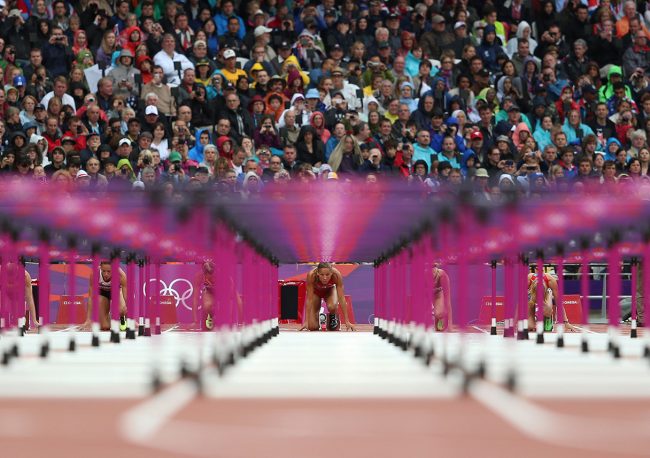
Lolo Jones prepares to run in the 100m hurdles during track and field at the Olympic Stadium during day 11 of the London Olympic Games in London, England, United Kingdom on August 7, 2012.
(Jed Jacobsohn/for The New York Times)
Light
Great light is key to an extraordinary photograph. When in comes to sports photography, finding different angles and knowing what the light may do in a particular situation can be very helpful. It is essential to do your homework and research before going to a particular venue or assignment. For example, if you know that the sunset will happen at 6 PM and there is a great view from the top of a stadium it might be great to scout beforehand to see where you can capture both the environment and the action on the field. Or perhaps there will be shadows of athletes from above that can make for nice graphic elements. Knowing what the light is going to do can help with this point.
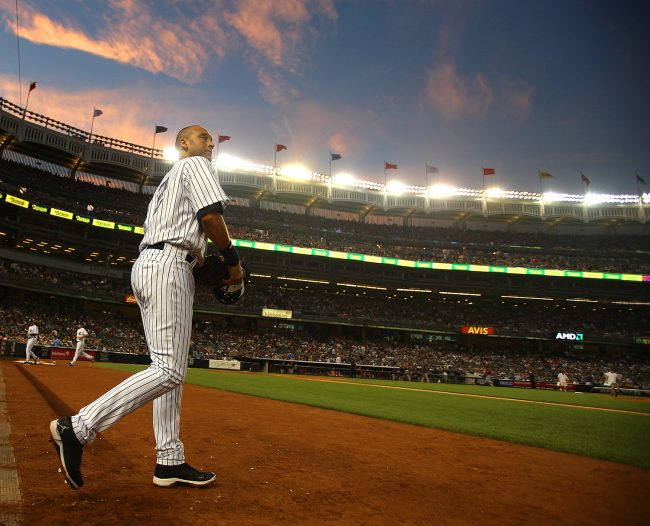
NEW YORK – AUGUST 30: the Baltimore Orioles and the New York Yankees on August 30, 2013 at Yankee Stadium in New York. (Photo by Jed Jacobsohn for Nike)
Another aspect of great light can also be created with artificial lighting as well. Having a knowledge of the proper use of a strobe or continuous artificial lighting is also key to have in your arsenal as a complete sports photographer and often relevant when working with athletes, especially in portrait situations.
Background
Having a clean background or a background that doesn’t distract the viewer from the subject of the photograph is especially challenging and important in sports photography. We’re often at the mercy of the photo positions available to us, so it’s especially important to choose wisely on where you place yourself when possible. Again, proper research and planning can help with this point. For example, if you know that shooting on the south side of a stadium at 4 pm into the sun will produce a backlit image and this produce a black background that this is something to look for and choose a position to shoot from accordingly. Another technical aspect of cleaning up the backgrounds can be achieved by shooting with the fastest possible lenses with the largest aperture possible. Shooting action with messy backgrounds it’s essential to be shooting at least at f2.8 to blow out the backgrounds. One of my favorite lenses for portraits is the Canon 50mm 1.2L because you can us it in almost any situation and make the background blow out.
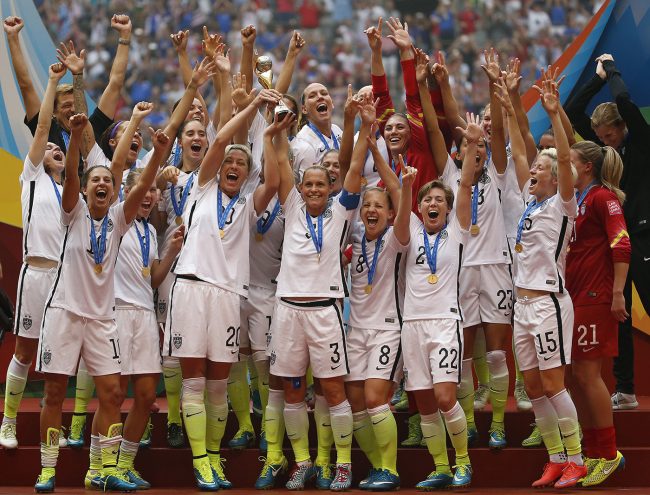
The USA vs Japan during the Women’s World Cup final on July 5, 2015, in Vancouver, Canada. (Photo by Jed Jacobsohn/The Players Tribune)
But shooting lenses at f/1.2-f/1.8 isn’t the only thing that comes into play when working to get a clean background. Background compression comes into play when using longer lenses, and because of that, focal ranges will provide different effects to depth of field. So many sports photographers love the use of longer lenses, Like the 400mm f/2.8 because not only does it allow them to get great close ups while staying out of the action, it also will give them a nice depth of field, bringing the attention to the subject.
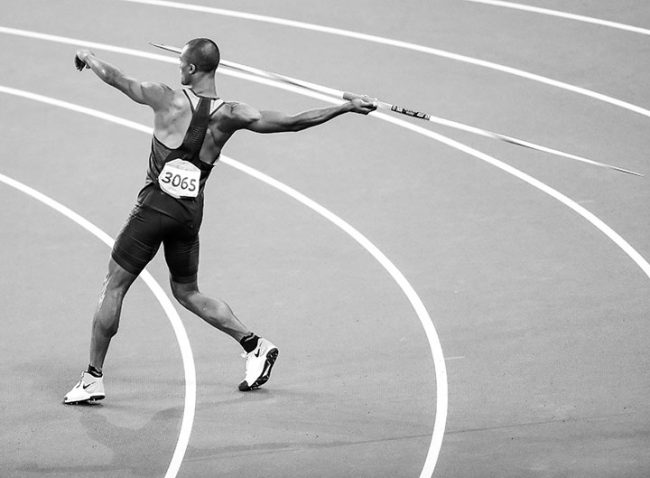
During the Rio Olympic Games in Rio on August 18, 2016. (Copyright Jed Jacobsohn/Players’ Tribune)
But the background isn’t the only thing that can come into play when choosing the lens for your subject, minimum focus distance can also have some effects as well. For example, say you’re shooting your son’s little league game, and you have a fence separating you and the players playing. By using something like the 70-200mm f/2.8, you’re able to take advantage of the ~3.9ft focusing distance, and photograph the game with the fence between you, without the fence becoming a distraction in the photos or through focusing issues.
Subject
Having a compelling subject matter is important to grab the attention of the viewer. In this day an age where imagery is everywhere, it is especially important to offer your audience something they are interested in. Along these same lines, it is important to know your audience or client and cater to them. Always provide the images that are expected of you, and then give more.
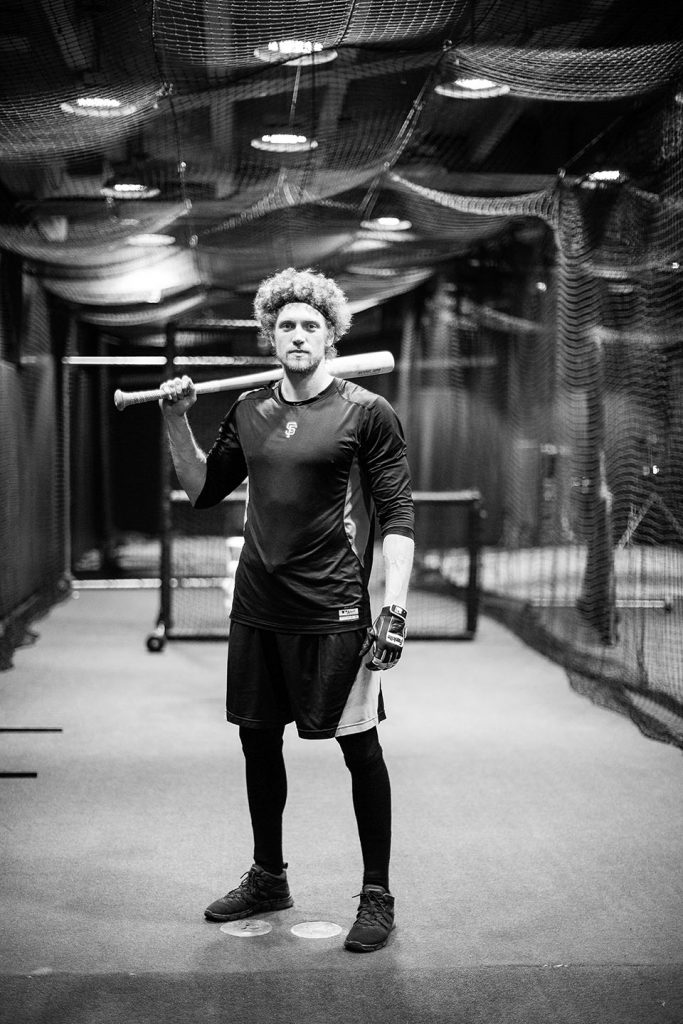
Hunter Pence of the San Francisco Giants, on February 3, 2015, in San Francisco. (Photo by Jed Jacobsohn/The Players Tribune)
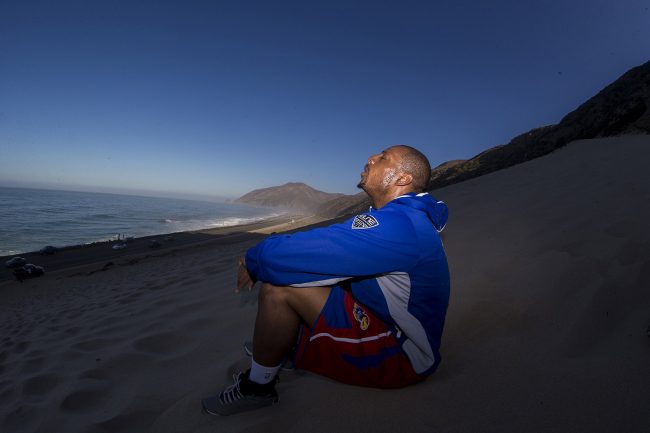
Paul Pierce of the Washington Wizards, on August 29, 2014, in Los Angeles, Ca. (Photo by Jed Jacobsohn/The Players Tribune)
One doesn’t need to photograph a famous athlete to accomplish this. Great sports stories are everywhere if we take the time to find them. If you can find the last point and apply the first three rules to it, then you are destined to great sports photography.
Practice
The biggest piece of advice I can offer is the most obvious among photography. In order to become a better sports photographer, you need to practice. However, practice doesn’t need to involve going to your local sports arena to photograph the LA Lakers each week from the stands. Practice can happen at your niece’s soccer game, our son’s basketball tournament and even tracking can be practice by throwing a tennis ball around a park with your dog chasing it back and forth. Becoming a sports photographer for a major publication takes thousands of hours of experience, and years of knowledge – and great sports photography can be captured at all levels – from professional to amateur.
As a staff photographer with the Players’ Tribune, all these elements of sports photography come into play with my job. One day I may be asked to cover the Olympics or the Super Bowl and another day I would spend a couple of days with an athlete for training and portraits, so it’s important to be well rounded.
And as a final completion of this article, and to entertain some of the gear savvy people too, I’d like to take a moment to share with me what I took to the Rio Summer Olympics this year in Brazil. The Olympics is far more challenging to shoot than say, football, specifically because you’re dealing with a broad range of different events, where various focal ranges and other things can change from event to event. For that reason, I chose to use the Canon 200-400mm f/4L IS as my main lens, as it has the versatility for all events (Typically, my Canon 400mm f/2.8L IS II is my go to for all American sports). That lens was attached to two Canon 1DX Mark IIs, and two Canon 1DX‘s for backups. Additionally, in my kit, I had my Canon 8-15mm FE (For more creative work), Canon 16-35mm f/2.8L II, Canon 24-70mm f/2.8L II, Canon 70-200 f/2.8L IS II, and my Canon 50mm f/1.2L.
Guest Contributor
Author: Jed Jacobsohn
-
taildraggin
-
KeithB
